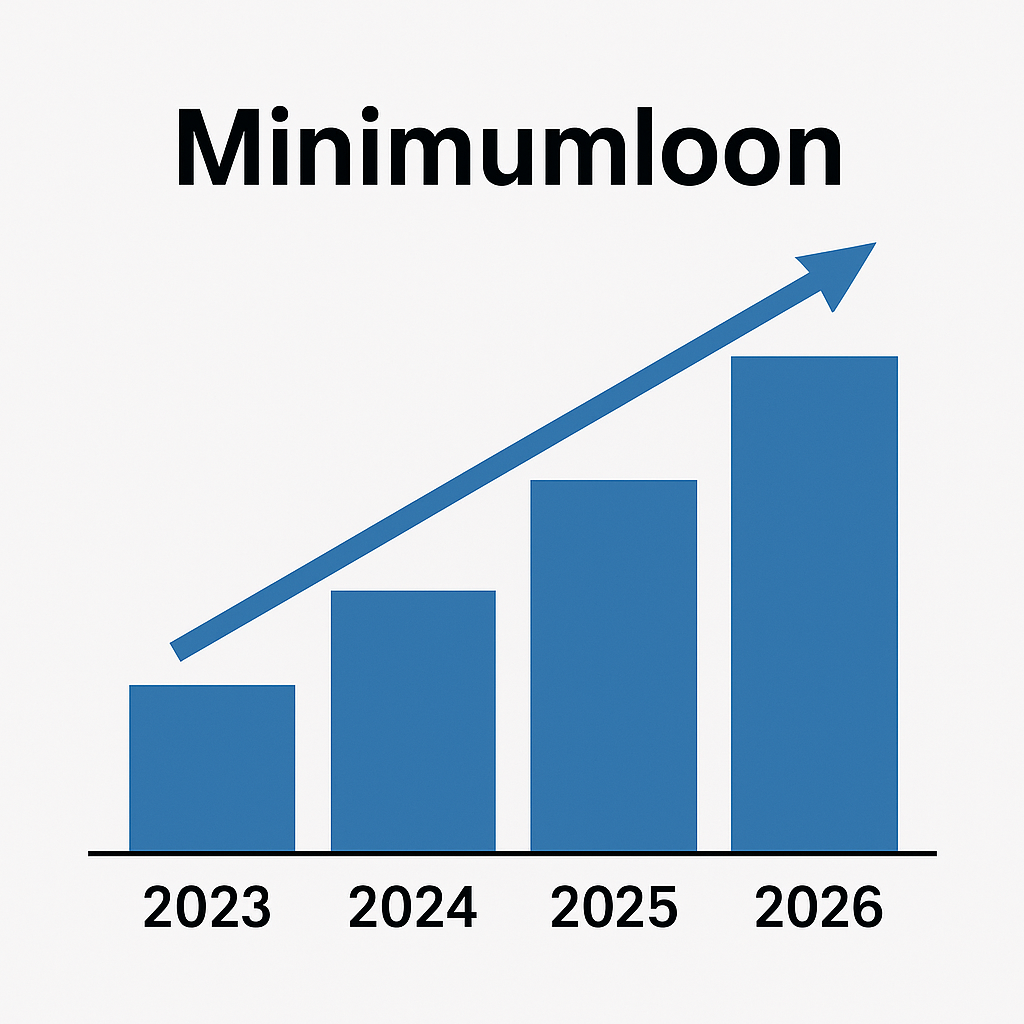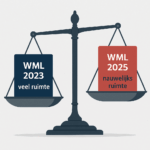Briefly: per 1 January 2026 it goes statutory minimum wage for 21+ to € 14,71. This follows from the shared House letter (1 October 2025). Official publication normally follows shortly after.
Since 1 January 2024 is the minimum wage in the Netherlands as hourly wage set (and no longer as monthly/weekly/daily wages). This makes the standard fairer between sectors with, say, 36-, 38- or 40-hour work weeks.
How exactly does indexation work?
The Minimum wage and minimum holiday allowance act (WML) Links the minimum wage to the contract wage development in the Netherlands. Simply explained: the ministry is looking at the CPB estimated increase in CAO wages, there fits the so-called post-ice effect on and legally rounds up. On this basis, the WML is adjusted twice a year (1 January and 1 July).
From monthly to hourly pay (2024): why it matters
Until 2024, the WML was a monthly amount. Sectors with 40 hours per week came as a result lower per hour out than sectors with 36 hours. With the introduction of the legal minimumúr wage (1 January 2024), this will be straightened out: one uniform hourly wage for everyone aged 21+. Central government+1
The amounts: 2023 → 2026 (official sources)
-
1 Jan 2023 - structural increase of 10,15% (on top of regular indexation). Monthly salary 21+: € 1.934,40 (≈ €12.40/hour at 36 h/wk).
-
1 Jul 2023 - new indexation. Monthly salary 21+: € 1.995,00; at 36/38/40 h/wk it is € 12,79/€ 12,12/€ 11,51 per hour.
-
1 Jan 2024 - introduction of statutory minimumúrwage: € 13,27 (21+).
-
1 Jul 2024 - indexation to € 13,68 (21+).
-
1 Jan 2025 - indexation to € 14,06 (21+) - recorded in the Government Gazette.
-
1 Jul 2025 - indexation to € 14,40 (21+) - Government Gazette 2025.
-
1 Jan 2026 - intended indexation to € 14,71 (21+) - according to the Parliament letter dated 1 October 2025 you shared; publication in Government Gazette to follow.
Note: in addition to the 21+ hourly wage, there are youth wages (percentages thereof). Official graduated rates can be found on Rijksoverheid.nl by semester.
Why the minimum wage is rising: the context
The substantial jump from 2023 (10.15%) was a one-off, additional increase to strengthen purchasing power; thereafter, the WML runs again through the statutory semi-annual indexation.
At 2024 is the systematics changed (hourly wages), resulting in a more transparent and fairer floor for all sectors.
Checklist for employers before 1 January 2026
-
Check hourly wage envelope in your salary package (21+ and youth wages) vs. € 14,40 (now) and € 14,71 (per Jan 1, 2026).
-
Cost estimate: calculate weekly and monthly impact for 36/38/40 h/wk; update quotations/hiring rates timely.
-
Collective agreement & hirer's remuneration: check whether allowances/periodic payments are provided by WML or separately.
-
Contract and schedule check: at fixed monthly remuneration: guarantee that the hourly wage per hour worked never drops below the WML (changing monthly hours!).
-
Communications: Inform employees and clients of the change and effective date.
Sources (selection)
-
Central government - amounts 2023/2024/2025: official tables and explanatory notes. Central government+2Central government+2
-
Official Gazette 17-10-2024 - indexation by 1 Jan 2025 and the calculation method (½ CPB + post-ice effect). Official Notices
-
Government Gazette 2025 - indexation per 1 Jul 2025 to € 14,40. Official Notices
-
Cabinet news release (2022) - one-off increase +10,15% by 1 Jan 2023. Central government
-
Labour Inspectorate - enforcement WML. Netherlands Labour Inspectorate



